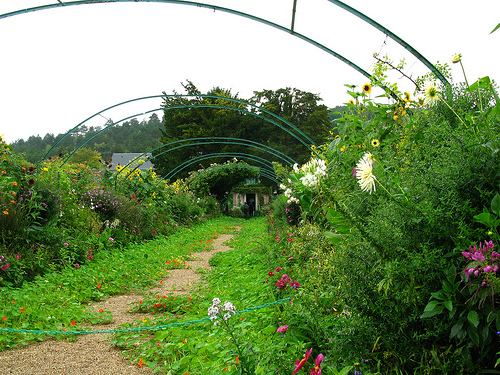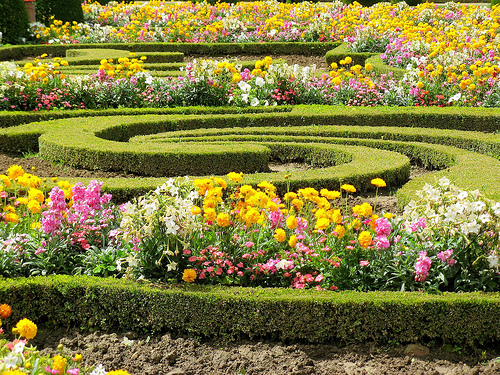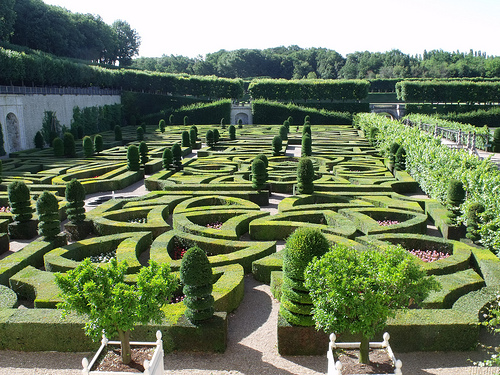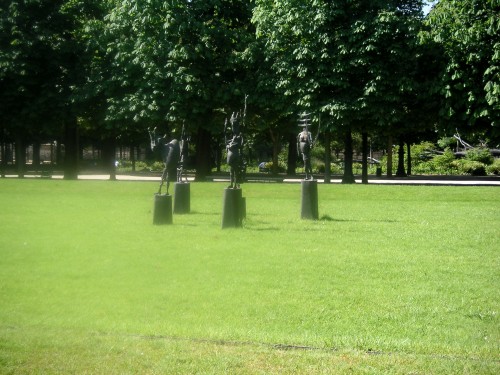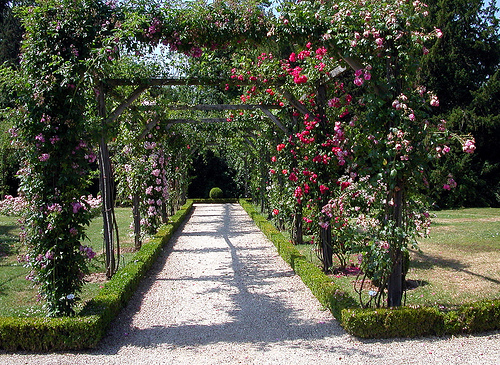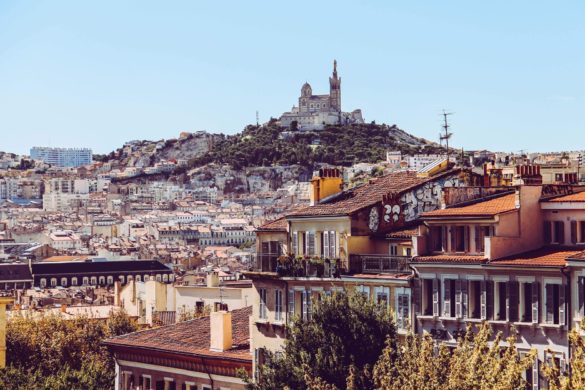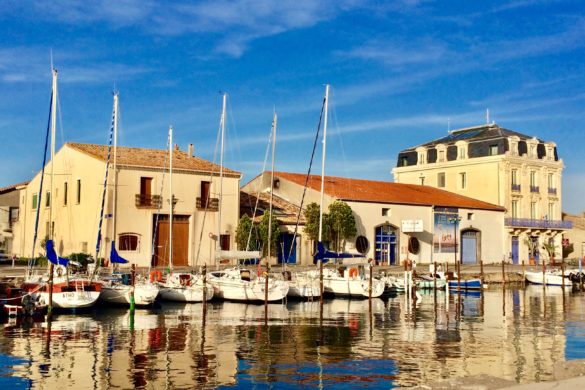While in a picturesque foreign country, like France, it’s great to check out the bustling cities and the famous artwork, but don’t forget to enjoy the more natural side. Beauty doesn’t require complex architecture or a practiced paintbrush—it can be found by simply taking a stroll and appreciating the gifts that Mother Nature offers us (and appreciating the gardeners dedicated to maintaining those gifts). Whether you fancy award-winning roses, mazelike patterns of shrubbery, or water-lilies worthy of the attention of an artist, there is a garden for everyone to enjoy in France.
Monet’s Garden
One of the popular gardens to visit in France is Monet’s Garden in Giverny. This modest home and sprawling garden served as home to the famous artist Claude Monet from 1883 until his death in 1926. After almost 10 years of restoration efforts, Monet’s property was finally opened to the public in 1980.
The gardens, which you can wander through and admire, provided the inspiration for some of Monet’s most famous paintings. When visiting this gorgeous floral landmark, you can view the flower garden “Clos Normand,” located in front of the house, or you can cross the street and peruse Japanese inspired water gardens, featuring Monet’s famous water lilies and Japanese bridge.
Though extensive remodeling and replanting took place to return Monet’s house and gardens to their former glory, the garden was designed by Monet himself. Visiting the garden is a great way to experience, first hand, a historic piece of beauty that inspired priceless artwork.
The Gardens of Versailles
If you’re looking to see an impressively large example of a Classic French garden, look no further than the gardens at the palace of Versailles. The gardens of Versailles are perhaps one of the most visited public sites in France and it’s not hard to see why if you have the chance to take them in. Also known as the Château de Versailles, the palace served as a home for the French monarchy for centuries.
The most notable inhabitant, King Louis XIV (“The Sun King”), expanded the building and grounds to their current size and majesty in the 1600s. The gardens, which were designed by André Le Nôtre, boast sculptures, manicured lawns, and parterres of flowers. It is, however, the multitude of fabulous fountains that contribute largely to the popularity of this spectacular garden. Whether you have a chance to view the entirety of the grounds, or you simply stop to admire one of the more noticeable fountains, the Gardens of Versailles will certainly strike you as worthy of royalty.
Château de Villandry
Perhaps the gardens with the longest and most culturally diverse back-story are the gardens at the Château de Villandry in the Loire Valley. This large estate and its grounds were constructed by Jean Le Breton in 1536. Le Breton had been an ambassador to Italy, where he studied Italian Renaissance gardens, and as such the original gardens largely reflected an Italian influence.
However, during the 19th century, Villandry came into the hands of the Marquis de Castellane, who redesigned the gardens to look more like an English style park. Over time the gardens fell into disrepair and they probably would have been demolished, however the Château de Villandry was rescued by Joachim Carvallo in 1906.
Carvallo, who was born in Spain, abandoned his science career to devote his life to reviving the Château and its gardens. Villandry is now home to a very interesting array of unique gardens, including the Potager and The Garden of love. The Potager is a kitchen garden, which was inspired by those found during medieval times in monasteries. Many of the other gardens on the property, including The Garden of Love, are composed of boxwood shrubs, painstakingly clipped into fascinating geometric designs and filled in with vibrant clumps of flowers. Letting yourself get lost in this mazelike set of gorgeous gardens will certainly be worth the visit.
Jardin des Tuileries
Situated between the Louvre and Palace de la Concorde, the Jardin des Tuileries is one of the most central gardens in Paris. This garden, and its adjoining palace, was built for Catherine de Medici on what was originally a clay quarry used to make tiles (known in French as tuileries). Though originally an Italian style garden, it was redesigned in the French Formal style between 1660 and 1664 by André Le Nôtre.
While walking through the garden you may admire the two large basins, the variety of fountains, or the new modern-style sculptures (which were added during renovations in 1990). In addition to the outdoor artwork interspersed throughout the garden you may want to check out the two museums on the premises: The Galerie Nationale de Jeu de Paume, or the Musée de’l Orangerie, in which you’ll find Claude Monet’s large water lily paintings.
The museum buildings themselves are also of interest since they are the remains of the Palace of Tuileries. Whether you’re more interested in modern sculptures, or the historic ruins of a castle, you’ll certainly find that the Jardin des Tuileries has come a long way from clay and tiles. If you happen to be making a summer visit, this garden hosts an annual funfair.
Bagatelle Gardens
Located on the edge of Bois de Boulogne, the Château Bagatelle and the Bagatelle Gardens have also come a long way. The Château, which was a hunting lodge, was purchased from the Prince de Chimay by Louis XVI’s brother, the Comte d’Artois.
As he began his expansion of the Château and grounds, Marie Antoinette wagered against the Comte, saying that the renovations of the Château could not be completed within 3 months. With the help of the architect François Joseph Belanger, as well as a vast amount of money, the Comte had his Château and its gardens completed in 63 days!
After the revolution, the Bagatelle came into the hands of Richard Seymour Conway who restored the gardens and added a grand entrance, stables, and an orangerie. By 1905, the city of Paris acquired the Château Bagatelle and Claude Nicolas Forestier (Commissioner of Gardens in Paris) established the Bagatelle’s now famous rose garden. Initially a simple hunting lodge, the Château Bagatelle now boasts a rose garden with over 9000 roses (1000 varieties) and is the site for an annual rose competition every June.
Which French garden have you visited? Tell us about your favorite?
Written by: Kelly Whelan Photo Credits: Nina Volare / HarshLight / ell brown / robin locker / gabrilu

